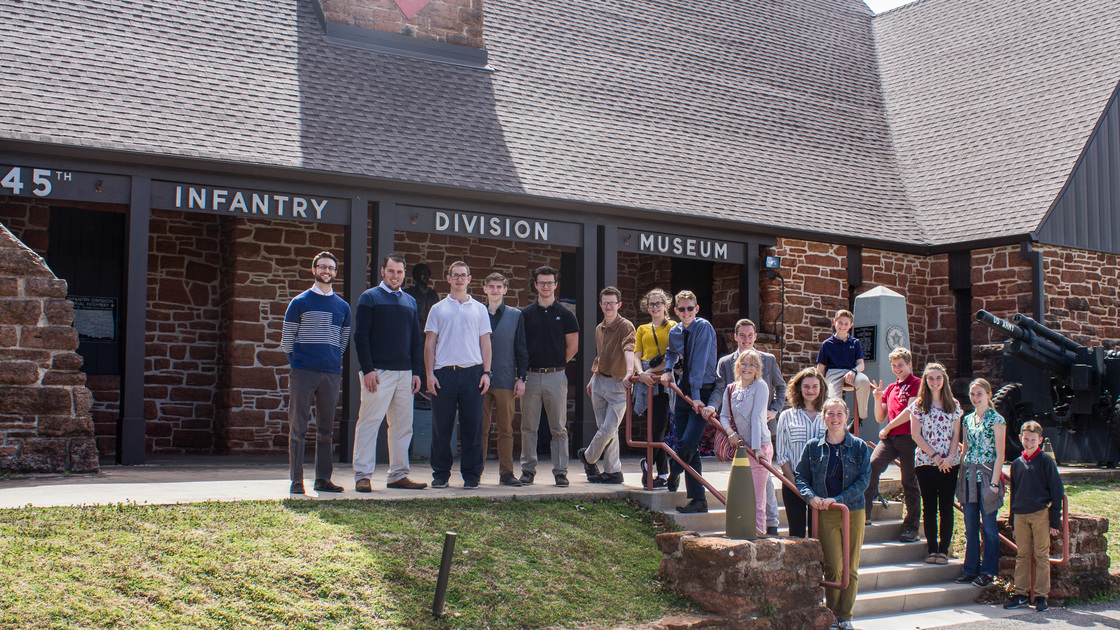EDMOND—Teachers and 29 Imperial Academy 7th–12-th grade students visited the 45th Infantry Museum and the nearby Oklahoma State Firefighters Museum in Oklahoma City on March 21 for their spring semester field trip.
Faculty split the students into six teams of mixed grade levels, with each team receiving a list created by Carleigh Blanchat, a student at Herbert W. Armstrong College and a part-time assistant in the Imperial history department. The list included scavenger hunt questions and riddles for the team to answer. Students searched for answers by studying the exhibits and listening to the guided tours given by the docents, who were at times themselves stumped by the challenging questions. After the field trip, one of the museums contacted the school to ask for a copy of the riddles.
At the 45th Infantry Museum, the students and faculty were guided by George, an elderly docent pursuing his history major at the University of Central Oklahoma. He said he was impressed when he asked one of his questions about the Works Progress Administration of the 1930s and 1940s and one of the Imperial 11th-graders eagerly answered it.
The 45th Infantry Division (1920–1968) was an Oklahoma army unit that fought in World War II in Italy, France and Germany and in the Korean War. In 1943, General George S. Patton called the 45th “one of the best, if not the best division in the history of American arms.”
The museum’s exhibits include the nation’s largest collection of Adolf Hitler’s personal effects, and discussion about the Nazi dictator included the explanation that his distinctive moustache had been trimmed that way during World War I to allow his gas mask to seal better and the idea that he actually fabricated his death in 1945 and escaped to Argentina (both ideas were rejected as false).
“I thought the collection of artifacts from Hitler was really fascinating,” said Imperial instructor Sarah Evans. “I had no idea the men of the 45th Infantry Division were among the first to enter Munich during World War ii, which meant a lot of soldiers brought home items that personally belonged to Hitler. It was really chilling to look at everyday items like china and tablecloths and realize they had been used and handled by him.”
Some students said they planned to return to the infantry museum during spring break to spend more time learning. (Admission is free, and donations are appreciated.)
At the Oklahoma State Firefighters Museum, the students were led by Joe, who recently retired from firefighting after serving for 25 years—including at the 1995 Murrah Federal Building bombing. His name is among those engraved in the museum’s Oklahoma Fallen and Living Firefighters Memorial.
The museum includes fire equipment dating from the 1700s to the 2000s, the first fire station built in the Oklahoma Territory in 1869, a collection of thousands of fire department patches, and a memorial of the 1995 Oklahoma City bombing.
The winning team finished the scavenger hunt challenge in two hours and 36 minutes, with 30 correct answers and received café gift cards.
“The trip was a great opportunity for the students to display a higher standard,” instructor Jordan Ellis said. “I think their enthusiasm and attention was probably refreshing for both museums’ staff members. … I think the firefighter’s museum was especially pleased to have a big group of interested, various youths.”
